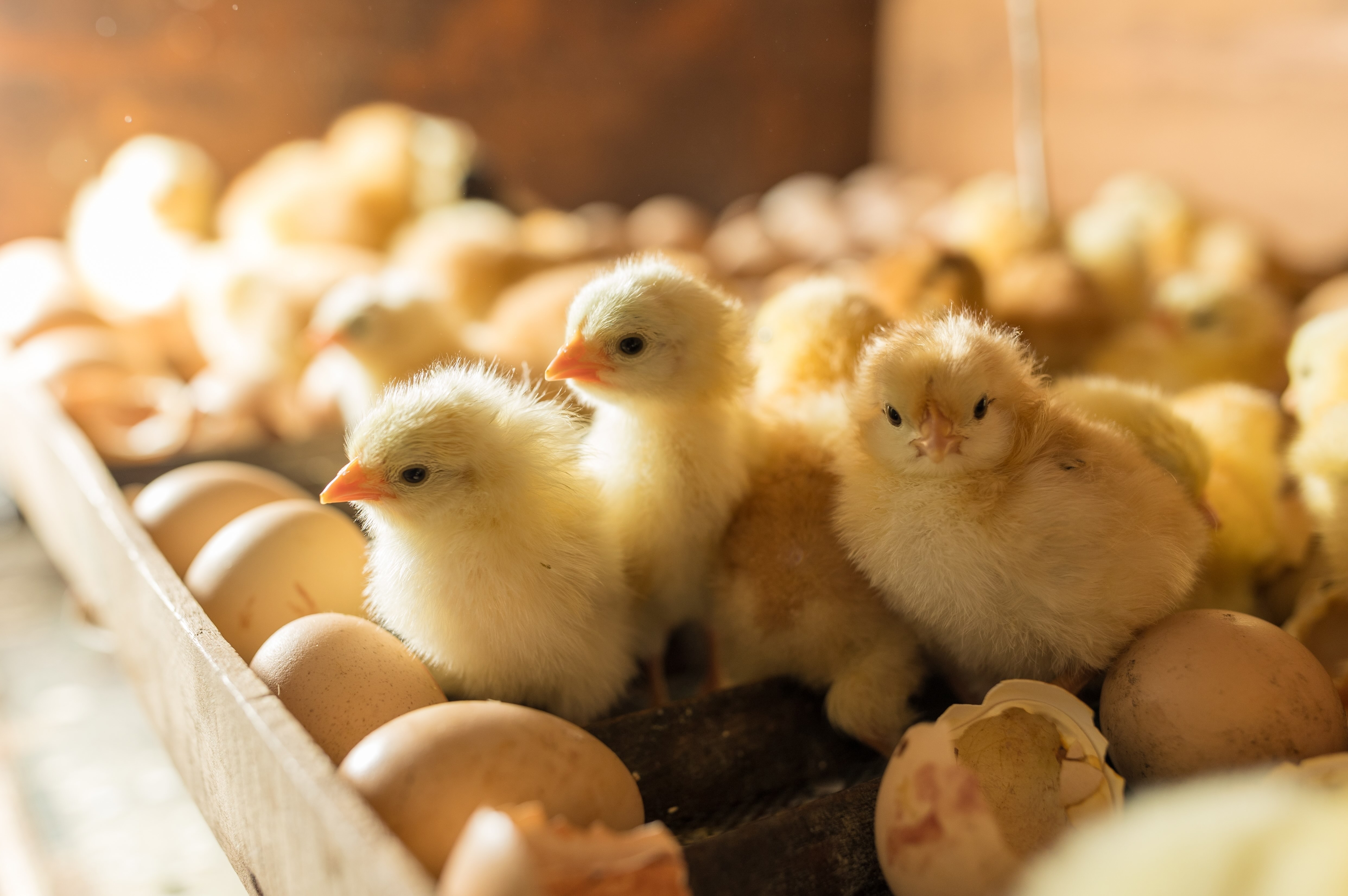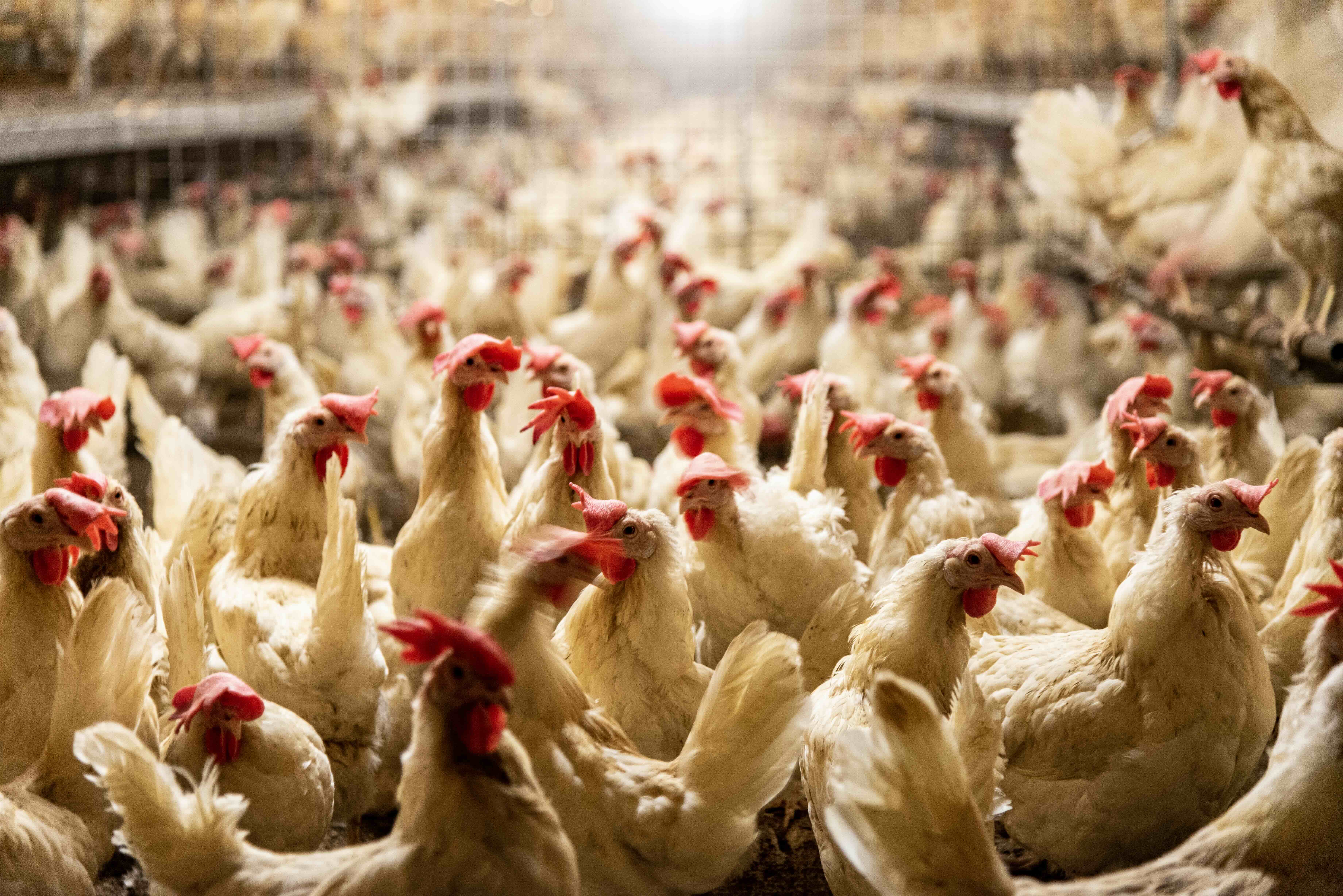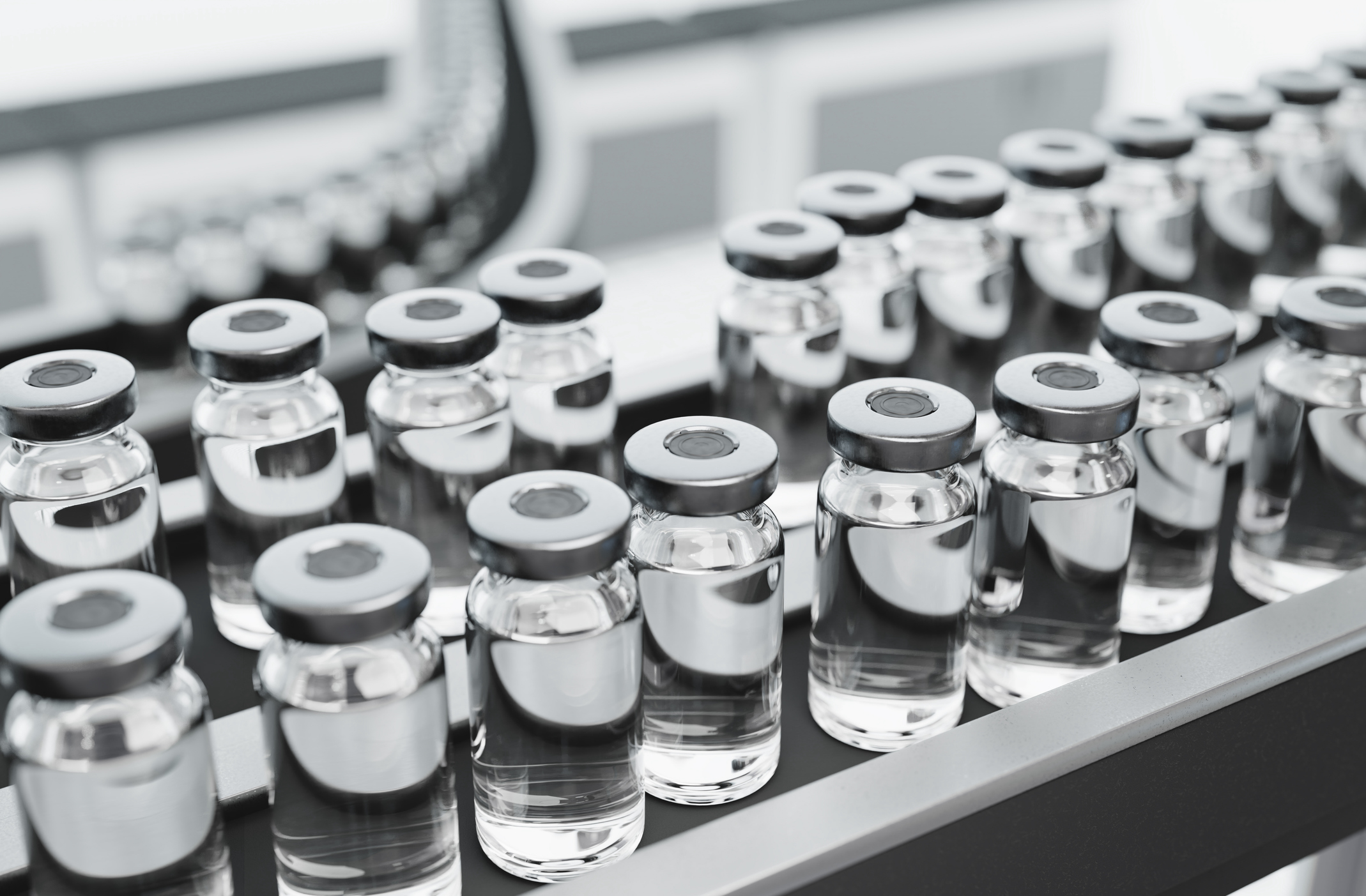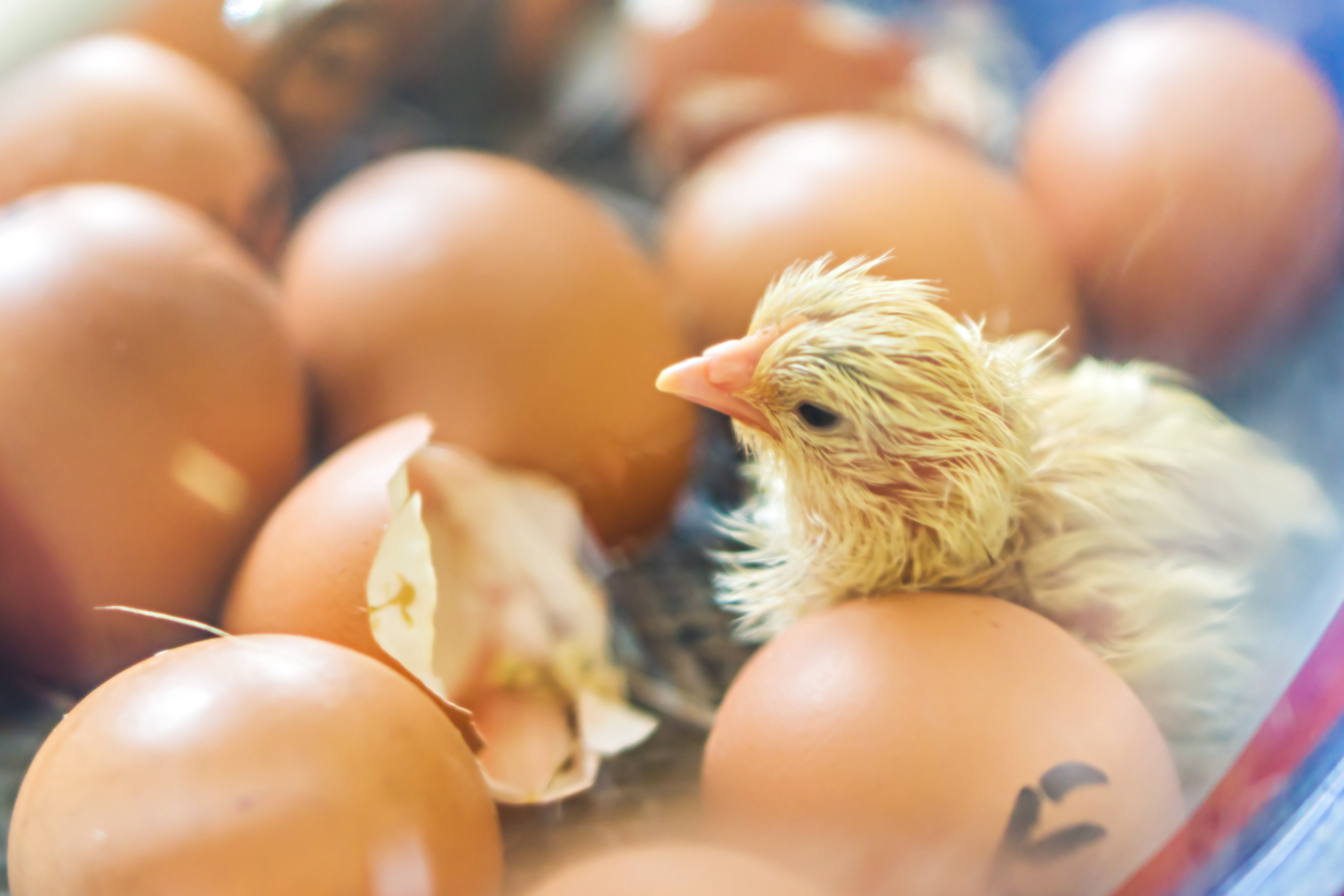
Sciences & Technology
The tiny drop fighting the big problem of antibiotic resistance

A new vaccine is protecting one-day-old chicks from a pneumonia-like illness that costs the poultry industry millions of dollars each year
Published 9 August 2024
Whether they’re poached, fried, scrambled or baked into our favourite dishes, Australians eat around 18.9 million eggs every day. That’s 6.68 billion eggs each year and some very busy chickens.
Because producing eggs takes energy, unwell chickens will slow or stop laying altogether, so we need to keep chickens in good health.

In poultry farms, pneumonia caused by Mycoplasma bacteria has been estimated to cause three million dollars of losses in one year, due to treatment costs and reduced income.
Mycoplasmas are the smallest bacteria and can infect animals, humans and even plants. Mycoplasma gallisepticum (MG) is an issue for poultry worldwide, causing chronic respiratory disease (CRD) in chickens.
MG can be introduced into a flock through infected eggs or bird-to-bird contact – causing sneezing, nasal discharge, coughing, noisy breathing and swelling around the eyes. This leads to loss of weight and laying fewer or no eggs.
Although some antibiotics are effective against MG, in Australia and many other countries, their use is highly regulated in poultry because bacteria can develop antibiotic resistance.

Sciences & Technology
The tiny drop fighting the big problem of antibiotic resistance
So, our team has focused on preventing the chickens from coughing in the first place.
We recently developed a vaccine that can successfully protect one-day-old chicks from becoming infected with MG or passing it on to other birds.
The ongoing use of antimicrobials in agriculture has been linked to a surge in the spread of antimicrobial resistance in poultry.
And MG infection in chickens is a key contributor to the use of antimicrobials in poultry, but increased antimicrobial resistance in mycoplasmas is emerging as an issue worldwide, particularly in Asia.
We need alternative solutions to control Mycoplasma infections in poultry to prevent production losses and improve animal health and welfare – without antibiotics.
That’s where the vaccine story begins.

Our research on poultry vaccines started in the 1980s when Professor Kevin Whithear and his team produced a strain of MG that was less virulent, less infectious and less able to cause disease.
This initial work came about from a joint recognition by the poultry industry and veterinarians of the need for a vaccine because the old methods of disease control weren’t working.
Known as MG ts-11, this strain was unable to survive in the warmer temperatures of a bird’s lungs, and instead, it became lodged in the bird’s nasal passages.
The bird’s immune system could then recognise the bacteria and develop antibodies to fight off any future infection from a disease-causing strain, without actually becoming ill or needing antibiotics.
This is what’s known as a live attenuated vaccine, and the research that continued at the Asia-Pacific Centre for Animal Health (APCAH) resulted in the first live attenuated vaccine in Australia for the control of CRD caused by MG in chickens.

Health & Medicine
The tech boosting world-class antimicrobial research
Named Vaxsafe® MG (strain ts-11) and licensed to Bioproperties Pty Ltd, for use in Australia in 1996, the vaccine has been commercialised for use in Asia, Europe, South America, South Africa, Japan and the USA.
The introduction of this vaccine saw a 90 per cent reduction in the use of antibiotics on poultry farms.
This work began our 35-year partnership with Bioproperties Pty Ltd.
In the 2000s, led by Professor Glenn Browning, our team worked with Bioproperties to develop a poultry vaccine to combat MG in turkeys, as well as chickens.
While the Vaxsafe® MG (Strain ts-11) vaccine was highly successful in controlling MG-related respiratory disease, further studies sought to improve it.
After several years of work and over 300 cloning attempts, we successfully purified the sub-strain ‘ts-304’ which was found to colonise and multiply in the respiratory tract of birds more efficiently than the original vaccine strain.

In fact, the superior colonisation characteristics of the new MG ts-304 strain meant it provided the same protection in three-week-old chickens as the current commercial Vaxsafe MG (strain ts-11) vaccine, but at a much smaller dose.
It also showed that the vaccine could colonise and protect turkeys, unlike the ts-11 strain.
Vaxsafe® MG304 was approved for use in turkeys in 2018 and fully registered for use in the control of mycoplasmosis in chickens in 2023.
Protection at an early age is effective in controlling many infectious diseases in humans and animals.
The same is true for chickens.
Vaccinating on the day of hatch means birds are better equipped to grow and develop without the stress of infections, which can spread quickly through a flock.

Health & Medicine
Stronger action to curb overuse of antibiotics
It is also an investment in the health and welfare of birds that can lead to improved immunity, better production performances, reduced disease-induced economic losses and reduced on-farm labour costs associated with vaccination.
In 2022, our team led by Professor Glenn Browning along with Dr Gregory Underwood and his group at Bioproperties – investigated vaccine delivery of Vaxsafe® MG304 at one day of age.
This work showed Vaxsafe® MG304 can protect chicks vaccinated at one day old and determined which mass vaccination methods are likely to be best to deliver Vaxsafe® MG304 in the hatchery.

Although we know one-day-old, vaccinated birds are protected from disease, we now have some new questions to answer.
For example, how long does it take for one-day-old chicks to be protected from infection after vaccination? Once the protective immune response is developed, how long does the vaccine protection last?
And what components of the immune system respond to mycoplasma vaccines?
We hope to find answers to these questions and more with our new ARC Linkage Grant.

Sciences & Technology
An ounce of biosecurity prevention is worth two pounds of cure
Our research aims to directly benefit Australian poultry farmers, reducing their costs and improving their productivity and animal welfare by improving the health of Australia's chickens.
It will also generate a greatly enhanced export market for an Australian veterinary biological product, particularly across Asia.
By replacing antibiotics with vaccination to control this pathogen, we will have a global impact on reducing antibiotic resistance in poultry, with added benefits for public health, both in Australia and overseas.
To learn more about sneezing chickens, come along to our free Science Festival masterclass.
Our research team includes Professor Glenn Browning, Associate Professor Philip Markham, Mrs Anna Kanci Condello, Dr Nadeeka Wawegama, Dr Kelly Tivendale, Dr Pollob Shil and Professor Amir H. Noormohammadi from the University of Melbourne. Dr Gregory Underwood, Dr Chris Morrow, Dr Robin Achari, Mr Philip Todhunter, and Ms Sameera Mohotti from Bioproperties Pty Ltd.
This work is supported by Australian Research Council (ARC) Linkage Grants.